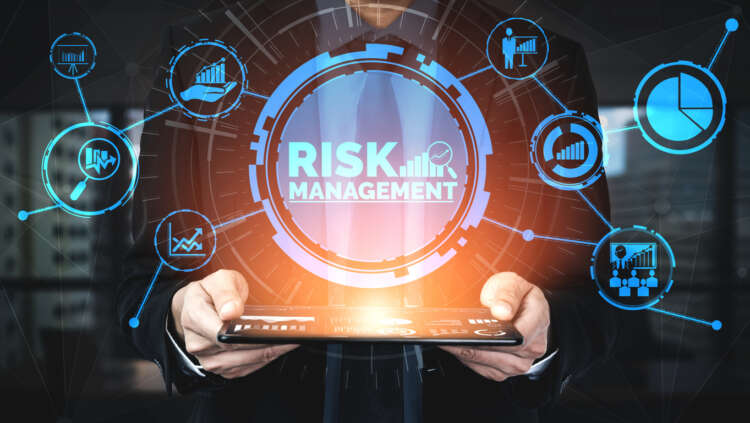The Top 6 Challenges Banks Face With Risk Management
Risk is inevitable. Apart from managing existing risks, banking enterprises have to manage various emerging risks which are new to them. This poses a great challenge when it comes to the risk management process. Banks have a responsibility of effectively managing risks across the organization and making sure losses are minimized, opportunities are maximized and business performance is improved.
Banks have to operate within the guardrails of innumerable risks which already exist such as credit risk, market risk, liquidity risk, cyber risk, compliance risk, legal risk, information technology risk, reputation risk, operational risk in banks and many more.
Strong risk management and compliance culture are some of the growth drivers for banking enterprises. New business opportunities bring with them new risks which can be challenging when it comes to risk management.
Let us find out the top 6 challenges faced by banks with risk management:
Protection against cyber risk:
- The banking, Financial Services and Insurance (BFSI) industry’s increasing reliance on technology and digitization have led to the risks of cyber-attacks such as ransomware, computer viruses, malicious or destructive code, phishing attacks, unauthorized data access, denial of service or information, attacks on personal emails of employees, application vulnerability and other security breaches.
- This could have a negative impact on the bank’s and its customers’ data confidentiality, integrity, and availability.
- The banking industry is one of the most targeted sectors when it comes to cyber security attacks.
- As cyber-attacks are becoming complicated day by day, banks should develop and implement various risk mitigation solutions such as appointing experienced Chief Risk Officers, prioritising and investing in cyber defence and using a sound data-sharing mechanism to safeguard data.
Internal control system:
- Having a strong internal control system, including internal and external audit functions and risk management functions independent of business lines enhances corporate governance for banking enterprises.
- Losses can occur as a result of inadequate or failed internal processes, people, or systems, as well as external events. It includes misreporting or non-reporting with respect to statutory, operational errors including clerical and record-keeping, system failures, misconduct by employees or outsiders, unauthorized transactions by employees and third parties and legal or regulatory reporting and disclosure obligations.
- Due to inefficient internal control, there has been an increasing number of frauds and violations of Know Your Customer (KYC)/Anti-money laundering (AML) norms.
- Therefore, banks should take necessary measures to strengthen their internal control mechanisms so as to ensure that such incidents do not recur.
Increasing competitive conditions:
- The rapid evolution of technology and digital infrastructure is impacting the way banks carries out their business. This competitive landscape has led to new competitor known as financial-technology companies or fin techs who aims to be a leader in terms of market share. Tech companies like Apple, Amazon and Google are already taking financial services by storm.
- This poses a threat to the local and regional banks. The availability of simple apps and online services is negatively impacting the direct customer relationships with the banks.
- Except for core banking products, banks may invest and collaborate with fintech competitors to leverage relationships with them leading to profits in the future.
Rising customer expectations:
- Change is constant when it comes to technology in banking services or consumer behaviour and thus it leads to change in consumer banking behaviours. Being relevant in the industry, meeting changing customer needs and enhancing customer convenience is a challenge for bank risk management.
- Banks have a challenging mission to grow their risk-calibrated core operating profit by utilizing their capabilities to seamlessly meet customer needs, delivering products and services that create value and carrying out business within well-defined risk tolerance levels.
- Thus, banks should place the customers at the centre of business operations and harness digital capabilities.
Meeting the regulatory deadlines:
- With the growing digitalization in banking businesses, banks have to continuously deal with regulatory challenges and simultaneously navigate through changes across their industry.
- With the emerging market, banks would be susceptible to more regulations than today. These regulatory changes will have a significant impact on the risk management in the banking sector.
- New regulations, amendments to the existing regulations along with political uncertainty, developing technology and changing customer mindset can be a challenge for bank risk management.
- This could raise the likelihood of non-compliance and regulatory action in the form of fines, restrictions, or other sanctions for regulatory failures.
- Banks should focus on creating a dedicated compliance team that continuously monitors new developments and updates the bank’s senior management on their implications.
Prevent identity theft and fraud:
- In the wake of COVID-19 and new digital operations, banking enterprises have been struggling to deal with an increasing number of fraud incidents. One of the most common types of digital fraud faced by banking enterprises is identity fraud.
- Fraudsters can now easily obtain personal information such as phone numbers, addresses, ID proofs, and images from social media sites that contain the majority of customers’ vital and vulnerable data, or from the deep web.
- The deep web is that part of the World Wide Web that is not identifiable by regular search engines like Google or Bing as they are concealed behind passwords or other security walls.
- Banks have been educating their customers about the dangers of phishing and other scams. Hundreds of people are still falling prey to such occurrences. Therefore, banks should focus on implementing improved tools for fraud monitoring and detection, create awareness about fraud and enhance the capabilities of the Fraud Risk Management (FRM) function.












